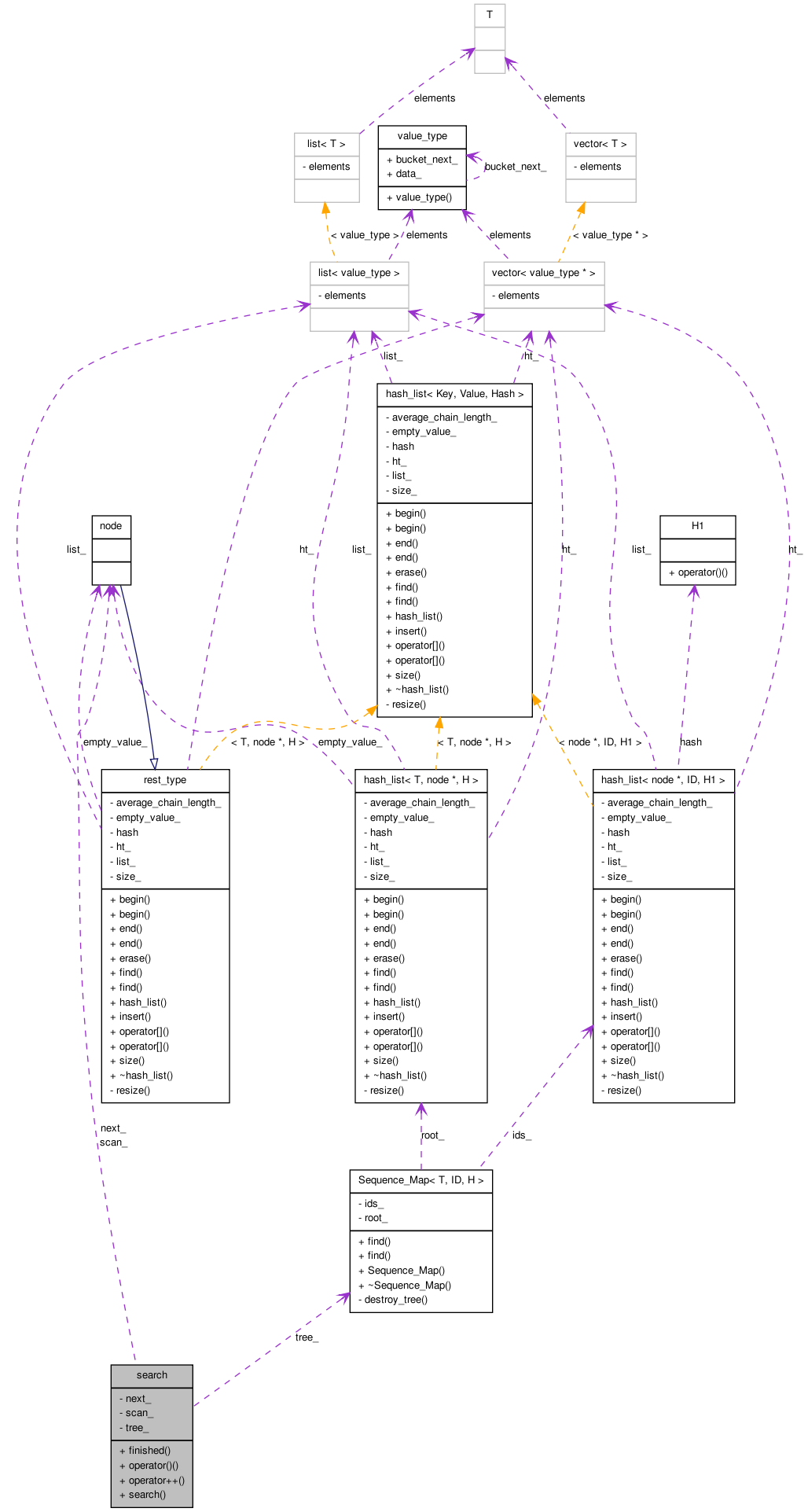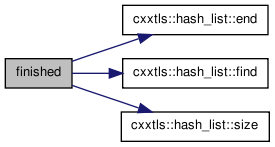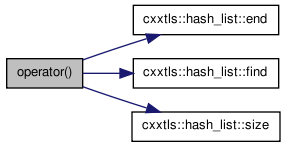search Class Reference
A 'search' is a context for comparing an arbitrary sequence with those stored in the Sequence_Map. The idea of course is to determine whether or not a given sequence exactly matches one found in the map -- and also what the ID of that sequence is. A search is a kind of iterator that scans through the structure of the Sequence_Map. You have to call operator++ to get to the next location in the sequence. If you want to know if you are sitting at the end of the sequence, call finished. A search does not exactly model an iterator so it has no comparison functions, and the Sequence_Map has no begin or end methods. More...
#include <sequence_map.h>

Public Member Functions | |
| bool | finished (ID *id) |
| bool | operator() (T const &value) |
| void | operator++ () |
| search (self &tree) | |
Private Attributes | |
| node * | next_ |
| next location to goto in the tree when operator++ is called | |
| node * | scan_ |
| where are we currently in the tree | |
| self * | tree_ |
| which tree are we talking about | |
Detailed Description
template<class T, class ID, class H = Hasher<T>>
class cxxtls::Sequence_Map< T, ID, H >::search
A 'search' is a context for comparing an arbitrary sequence with those stored in the Sequence_Map. The idea of course is to determine whether or not a given sequence exactly matches one found in the map -- and also what the ID of that sequence is. A search is a kind of iterator that scans through the structure of the Sequence_Map. You have to call operator++ to get to the next location in the sequence. If you want to know if you are sitting at the end of the sequence, call finished. A search does not exactly model an iterator so it has no comparison functions, and the Sequence_Map has no begin or end methods.
Definition at line 279 of file sequence_map.h.
Constructor & Destructor Documentation
Construct a search on a given sequence map -- and starting at the top level of its tree of sequence data.
Definition at line 299 of file sequence_map.h.
Member Function Documentation
| bool finished | ( | ID * | id | ) |
Determine if the current location in the sequence is the end of a sequence. A true return value means yes and the id will be updated. Otherwise false will be returned and the id will not be updated.
Definition at line 356 of file sequence_map.h.

| bool operator() | ( | T const & | value | ) |
Check to see if a specified value is a valid next member of the sequence up to this point. Sets the next_ member.
Definition at line 308 of file sequence_map.h.

| void operator++ | ( | ) |
Assuming that someone has already called operator()(T const&), and have gotten an true indication, step to the next item in the sequence along this direction.
Note that multiple calls to operator() (T const&) can be made. The most recent call is the one that defines the direction operator++ will take -- if any
Definition at line 334 of file sequence_map.h.
Member Data Documentation
next location to goto in the tree when operator++ is called
Definition at line 295 of file sequence_map.h.
where are we currently in the tree
Definition at line 294 of file sequence_map.h.
which tree are we talking about
Definition at line 293 of file sequence_map.h.
The documentation for this class was generated from the following file:
- include/cxxtls/sequence_map.h
 1.6.3
1.6.3